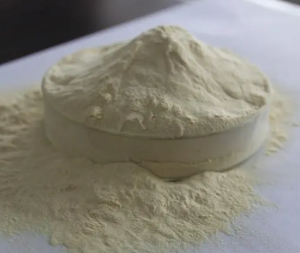Hydrolyzed Vegetable Protein: A Versatile Ingredient in Food Production
Hydrolyzed vegetable protein (HVP) is a versatile ingredient that is commonly used in the food industry to enhance the flavor and nutritional value of various products. HVP is made by breaking down vegetable proteins into smaller peptides and amino acids through a process called hydrolysis. This results in a product that is easier to digest and provides a savory flavor to foods. In this article, we will explore how HVP is used and its benefits in food production.
Uses of HVP in Food Production
HVP is widely used in the food industry as a flavor enhancer in a variety of products, including soups, sauces, gravies, snacks, and meat products. It is also used as a source of protein in vegetarian and vegan products, such as meat substitutes and protein bars.
HVP is a popular ingredient in savory snacks, such as potato chips and crackers, as it provides a rich umami flavor that is highly desirable to consumers. It is also used in meat products, such as sausages and burgers, to enhance the meaty flavor and improve the texture of the product.
In addition to its flavor-enhancing properties, HVP is also used as a source of amino acids in food products. Amino acids are essential for building and repairing tissues in the body, and they are particularly important for athletes and people who are physically active.
Benefits of HVP in Food Production
One of the main benefits of HVP is its ability to enhance the flavor of food products. HVP provides a savory flavor that is highly desirable to consumers, and it can be used to mask off-flavors and improve the overall taste of a product.
HVP is also a cost-effective ingredient in food production. It is less expensive than other sources of protein, such as meat and dairy, and it is a more sustainable option as it is derived from plant-based sources.
Another benefit of HVP is its nutritional value. HVP is a rich source of amino acids, which are essential for building and repairing tissues in the body. It is also low in fat and calories, making it an ideal ingredient for people who are watching their weight.
HVP is also a versatile ingredient that can be used in a variety of food products. It can be added to soups, sauces, gravies, and snacks to enhance the flavor and nutritional value of the product. It can also be used in meat products to improve texture and provide a meaty flavor.
In conclusion, hydrolyzed vegetable protein is a versatile ingredient that is widely used in the food industry to enhance the flavor and nutritional value of various products. It is a cost-effective and sustainable option that provides a rich umami flavor to food products. With its nutritional benefits and versatility, HVP is a valuable ingredient in food production.
You can find suppliers of Hydrolyzed Vegetable Protein at your local food raw material suppliers or food ingredient distributors. You can also search the internet for Hydrolyzed Vegetable Protein suppliers, many companies offer this product. When selecting a supplier, it is recommended that you check their reputation and qualifications to ensure they provide high-quality products. At the same time, you should also consider factors such as price, delivery time and minimum order quantity to ensure that the supplier you choose can meet your needs. You can refer to kemfood.com

